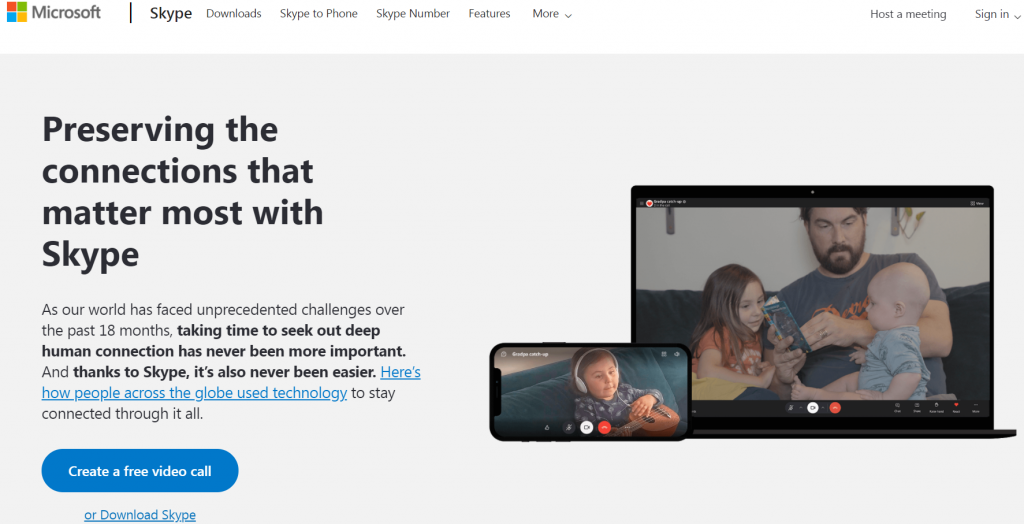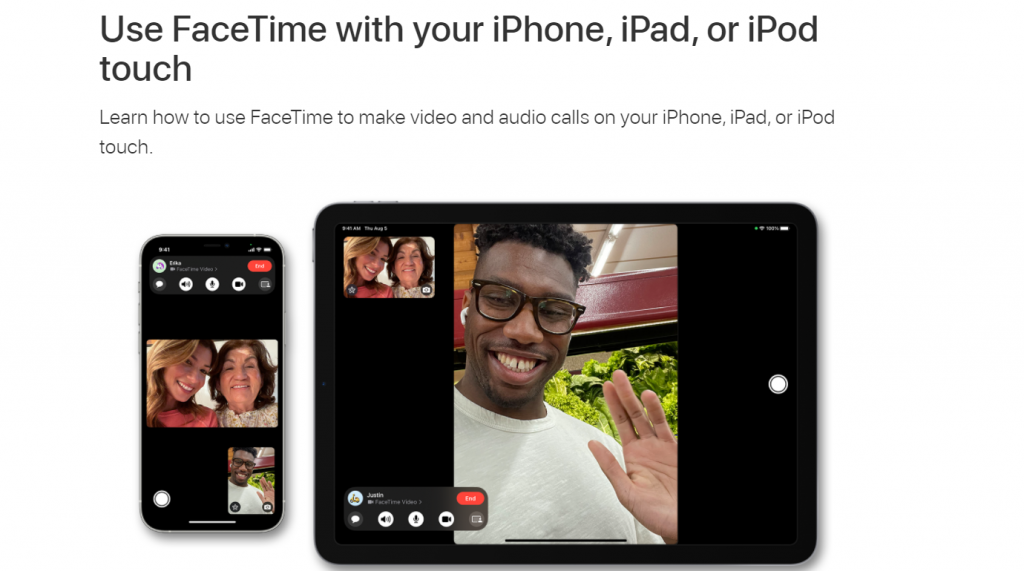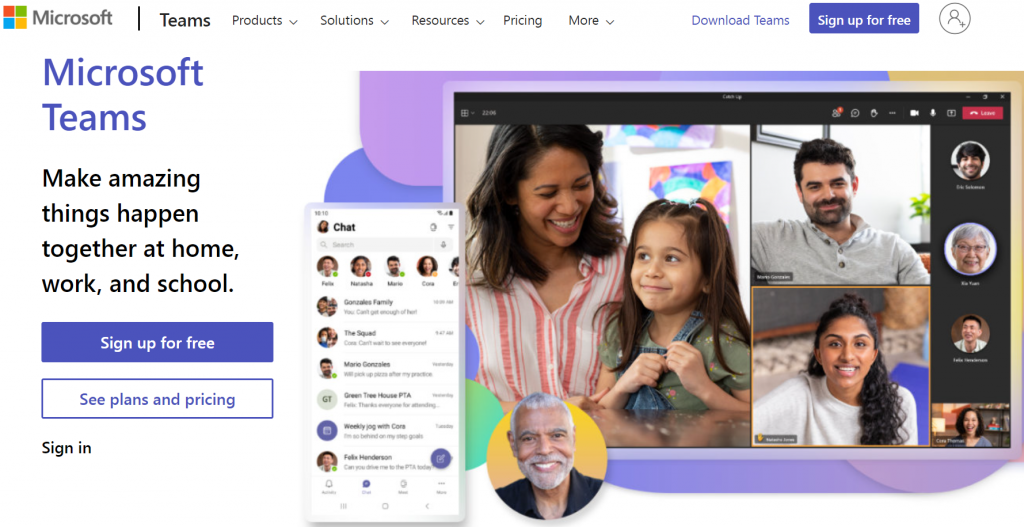The business world has gone upside down during the 2020 COVID pandemics. But work did not stop, and many processes, including sales, got enhanced thanks to technologies. In particular, the percentage of teleworking (working from home) staff has increased.
Some statistics display that the organization of remote business processes was ready for the lockdown:
- 62% of staff members telework from time to time.
- 30% of employees are full-time distant workers.
- The share of remote staff has grown by 115% during the last decade and keeps growing.
- Nowadays, 55% of organizations allow employees to work remotely, and from 2019 to 2022, this percentage will increase up to 77%.
In addition to all of these changes, many businesses also had to up their game when it comes to their online presence. If you’re still staggering behind when it comes to a great website we’d suggest you head over to WMPMU DEV. WPMU DEV’s all-in-one platform makes it easy for anyone to create and manage websites. Get 20% off any of their plans. Free trial included.
But live communication is a cornerstone of any business, so no wonder that video collaboration apps have become some of the most sought after, downloaded, and used tools during the COVID-19 pandemic.
These apps are now used for remote cooperation (sales video calls, presentations, team meetings, planning, discussions, etc.), for education purposes by students and teachers, or simply for personal communication to maintain contact with family or friends.
Our concern is the business world, and another source shows the following figures:
- 94% of organizations that use video collaboration tools state that their business enjoys benefits from higher productivity.
- 35% of staff that use videoconferencing at work feel more engaged and appreciated in their team.
- The global market share of video collab tools in 2019 was valued at $3.85 billion.
- In contrast to just two years ago, today, 87% more people choose to use videoconferencing.
- Zoom, a popular video conferencing platform, connected 200 million people on an average daily basis at the start of 2020 — an increase from only 10 million people at the end of 2019.
- 75% of CEOs forecast that video conferences will substitute traditional meetings.
- 83% of large organizations are very likely to buy video collab apps to use in their daily business operations.
All these tools are different, but they serve the same goal – effective communication. And what’s more important in business than a productive dialogue? Nothing.
So, we’ve collected these tools for you to check out and select the one that’s perfect for you. By the way, they all can equally perfectly serve your sales and marketing strategies. The difference is probably up to your client — you will most likely use the tool you are both comfortable with.
Top 6 most popular video collaboration tools in 2021
1. Calendly
Calendly is a powerful software solution for scheduling group video conferencing, webinars, and training. Its main goal is to help teams save time, improve customer experience, increase lead generation, and scale sales.

Calendly benefits:
- You can schedule a meeting with one click in the schedule widget.
- There is an unlimited number of customized events.
- It connects to a variety of calendars: Google, Office 365, Outlook, and iCloud.
- There are automatic email notifications for upcoming scheduled events.
- It offers reports of scheduled invitees by source, campaign, event type, date, etc.
- It provides extended user synchronization via SCIM (System for Cross-domain Identity Management).
- You can integrate Сalendly with Kommute to send personalized video messages to your current and potential clients.
- You can integrate Calendly with Snov.io to launch email trigger campaigns and schedule sales meetings. With its help, you can increase lead generation by setting up a chain of personalized
- emails, using ready-made templates of the platform, and setting up A/B testing to understand which approach to leads is more effective.
2. Zoom
The most popular video conferencing brand, by far! Zoom Meeting is an application for video conferencing that stands out for being specialized for the business environment. From the Zoom platform, it is possible to make videoconferences, chat, and organize webinars easily and quickly.

Zoom benefits:
- It is capable of including up to 1000 people simultaneously.
- It has video tutorials to learn how to use all its functions.
- It allows you to send files and has a chat system.
- It allows you to configure different levels of visibility for the participants of the video conference.
- It has a virtual whiteboard, where you can draw or write in real-time.
- Meetings (Zoom Rooms) can be scheduled and recorded, with the option to share the screen during them.
- It allows you to share the screen and show the webcam simultaneously (ideal to display the screen’s content without losing the image of the transmitter).
- You can add an image as the background of the videoconference.
- It is possible to share live sessions with social networks such as Facebook Live and YouTube.
- It is cross-platform (Linux, Windows, Android, and iOS).
3. Skype
Skype is Microsoft’s application for talking, chatting, and collaborating. It comes pre-installed in Windows 10 and can be downloaded from the official website, Google Play, and the App Store. It is a tool that can be used for many types of videoconferences, from video calls between two to business meetings with multiple users or even to teach classes over the Internet.

Skype benefits:
- It allows you to make high-definition video and audio calls.
- You can record calls and use subtitles.
- It enables screen sharing.
- It supports up to 50 simultaneous users.
- It uses an encryption system to guarantee the security of the calls.
- It has a chat and the option to send files between users.
- It allows you to contact users who do not have Skype.
4. Google Hangouts
This free tool from Google requires a Gmail account to use it. It is multiplatform and can be used from personal computers or Android and Apple devices. It is ideal for video conferencing between users, meetings with multiple participants, or even giving classes. It should also be noted that Google Hangouts allows you to broadcast live, generating a link from which anyone can access the broadcast (for example, FC Barcelona used Hangouts to introduce their player Neymar).

Google Hangouts benefits:
- It allows video or voice calls with multiple users.
- It has a chat.
- It offers the possibility of screen sharing, so it is handy for training, meetings, and presentations.
- You can be connected to YouTube to share the content on that platform after making the video conference.
- It supports 10 users on Smartphones and 15 on PC.
- It is possible to add users who do not have a Google account (but they will have fewer options).
- It can be connected with Google Voice to integrate calls, SMS, and voicemail.
5. FaceTime
FaceTime is a video conferencing tool that works with any Apple device (iPhone, iPad, or iMac). When a FaceTime video conference is requested, the recipient will receive the same notice on all the linked Apple devices. FaceTime is the equivalent of Skype for Apple-branded devices. It also works on other devices using support apps but shows its maximum performance when videoconferences are made between devices of the brand.

FaceTime benefits:
- It allows you to use both the front and rear cameras of different devices.
- You can make individual or group calls, both video- and audio-only.
- It comes installed with Apple devices.
- It supports HD calls with 720p.
- It is a secure application with end-to-end encryption.
- It shows outstanding performance across Apple devices.
- It allows group calls of up to 30 people.
- You can use it with your Apple iCloud account.
- It consumes few device resources.
6. Microsoft Teams
Microsoft Teams is a practical hub for collaboration that includes chat and thread conversations, video conference meetings, calls, content sharing using Microsoft 365 tools, and the ability to create and integrate apps and workflows that your business needs.

Microsoft Teams benefits:
- One-to-one chat, group messages, or dedicated channels to communicate with your team.
- Scheduled face-to-face video and audio call with HD, from almost any location.
- You can tag specific team members or the whole team to attract the attention of your colleagues.
- Calendars, to-do lists, access to safe virtual storage straight in group chats.
- File sharing and editing on the go, smart search through files in team chats and conversations.
- Safe storage with a high level of compliance and security.
Other applications for video conferencing
In addition to the video collaboration tools we mentioned above, there are many others on the market that can be of great help when you need to make a sales call, a presentation, or a team meeting.
Some of the most popular ones are:
- Viber. Similar to Skype, it has security encryption and multiple functions and is limited to video calls between 2 devices.
- Jitsi. An open-source application that has no participant limit (set by hardware and network capacity).
- Whatsapp. It also allows videoconferences from the app itself, with a limitation of 4 simultaneous people.
- GoToMeeting. Cloud platform for online meetings and desktop sharing, supporting up to 3,000 participants.
- ooVoo. Multiplatform for HD video conferencing that allows a maximum of 8 simultaneous users.
- Spike. Focused on work environments, it presents emails in a chat format with the option of making VoIP calls.
- Facebook Messenger. It has the advantage of having the strong popularity of this social network and its massive use. Up to 50 people can participate, although they are not encrypted calls.
Bottom line
Current technology offers a large number of alternatives to choose from for every communication need, such as videoconferencing for sales. These audio and video conferencing tools break barriers and shorten distances, allowing you to meet with your potential and existing clients and team members, support your outreach campaigns, and organize daily or weekly meetings with great ease and comfort. We hope you choose the right video collaboration instrument to help you meet your sales goals and achieve success in your career.
Author: Mary Yunevich
Bio: During the day, she is an author of articles in the Snov.io blog. At night, she is the queen of horror films and the inhabitant of the Steven King universe.


